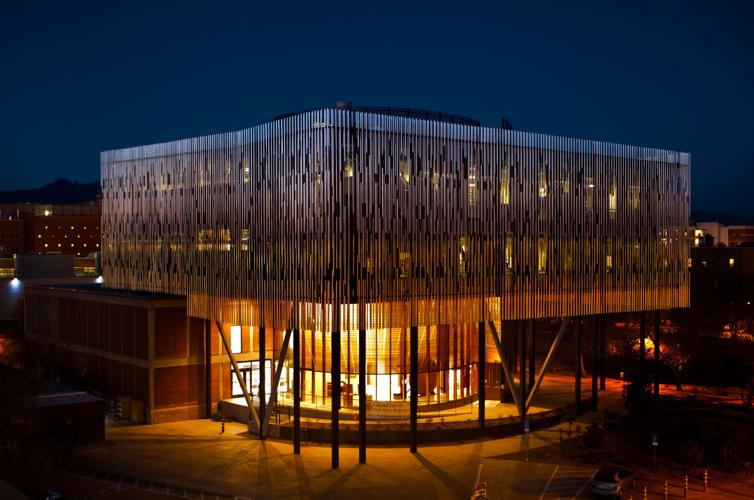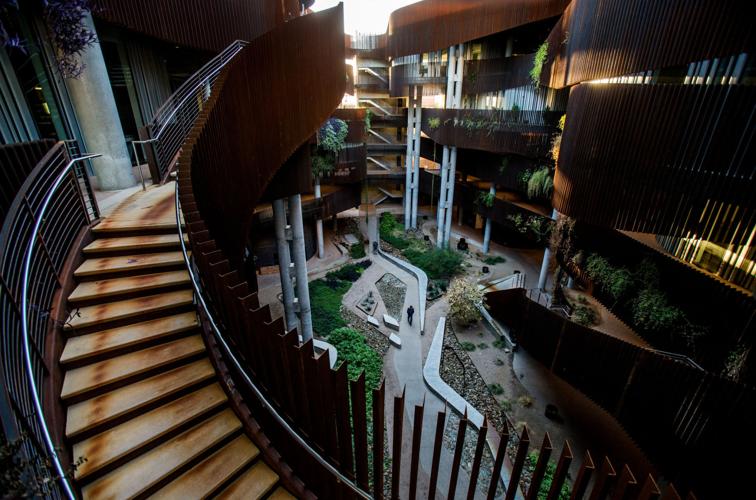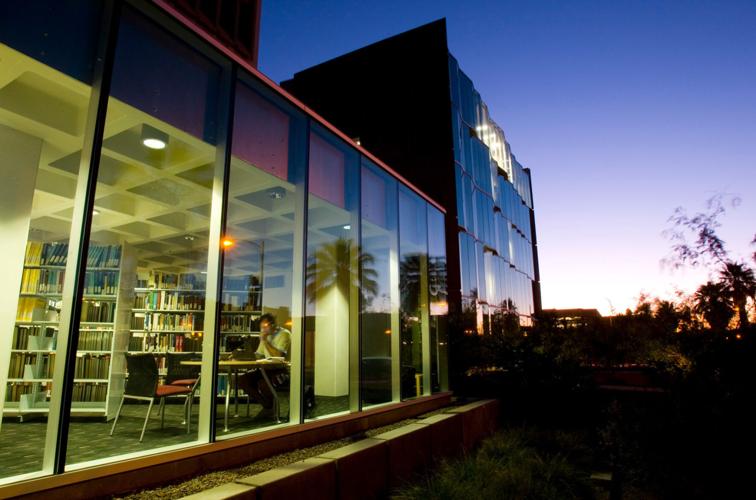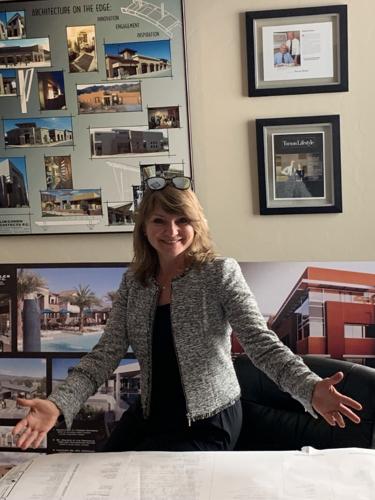The University of Arizona campus is my favorite place in Tucson.
Every visit is a treat, an opportunity for inspiration, a possibility to stretch the wings of imagination, and to glimpse into the intriguing future.
The college of architecture is, by design, provocative, gutsy, edgy, and evokes students’ and visitors’ imaginations.
Coined by American architect Louis Sullivan, the phrase “form follows function” could be extended to “form and function follow an idea.”
By looking at almost any building on the UA campus, you could guess which educational department occupies it, and therefore distinguish the disciplines taught therein and its inherent propensity to enrich the minds of those who assemble. Architectural language of overall mass, rhythm, and hierarchy of details, all conglomerate into a collection of shapes that translate into a distinct portrait of a scientific discipline.
Environment and Natural Resources 2 Building, by architect Jim Richard from Richard, Kennedy Architects, is organized around a living and breathing central “slot canyon,” created out of humble materials derived from the Sonoran Desert — concrete, corten steel and glass. The canyon creates a distinct microclimate on the southwest side of the campus and offers a deep connection to nature despite its urban location.
The Meinel Optical Science Building shines like an open geode on the campus with the rough texture of rock on three sides, and unbelievable discovery of the open gem on the northern facade. As for the interpretation of the Fresnel lens on the north, the sun’s rays bounce from prismatic crystals of the textured glass facade and define the essence of optical science, together with three distinct skylights.
Bryant Bannister Laboratory of Tree-Ring Research is the centerpiece of the Tree-Ring Lab. The prime function of the building is the consolidation of an irreplaceable collection of wood samples. The building design is an abstraction of the forest structure with randomly clustered steel columns, like tree trunks, at the ground level, and over-story shaded veil of aluminum tubes that float on the wind like a tree canopy.
These stunning architectural examples inspire awe and evoke imagination, similar to that of the Stevie Eller Dance Theatre — School of Dance, the UA Chemical Sciences building by Hensel Phelps, and many more. All of these buildings hold a distinctive story, as unique to itself as a life story is to an individual.
In my mind, the UA’s architecture boldly stands apart from other campuses through an assortment of masterpieces. The architecture marks a progression through time. It’s not peering into the past as a means for imitation, but is looking forward to what lies ahead. The collection of newly added buildings in the past decade offer a bridge to the future, to the unknown.








